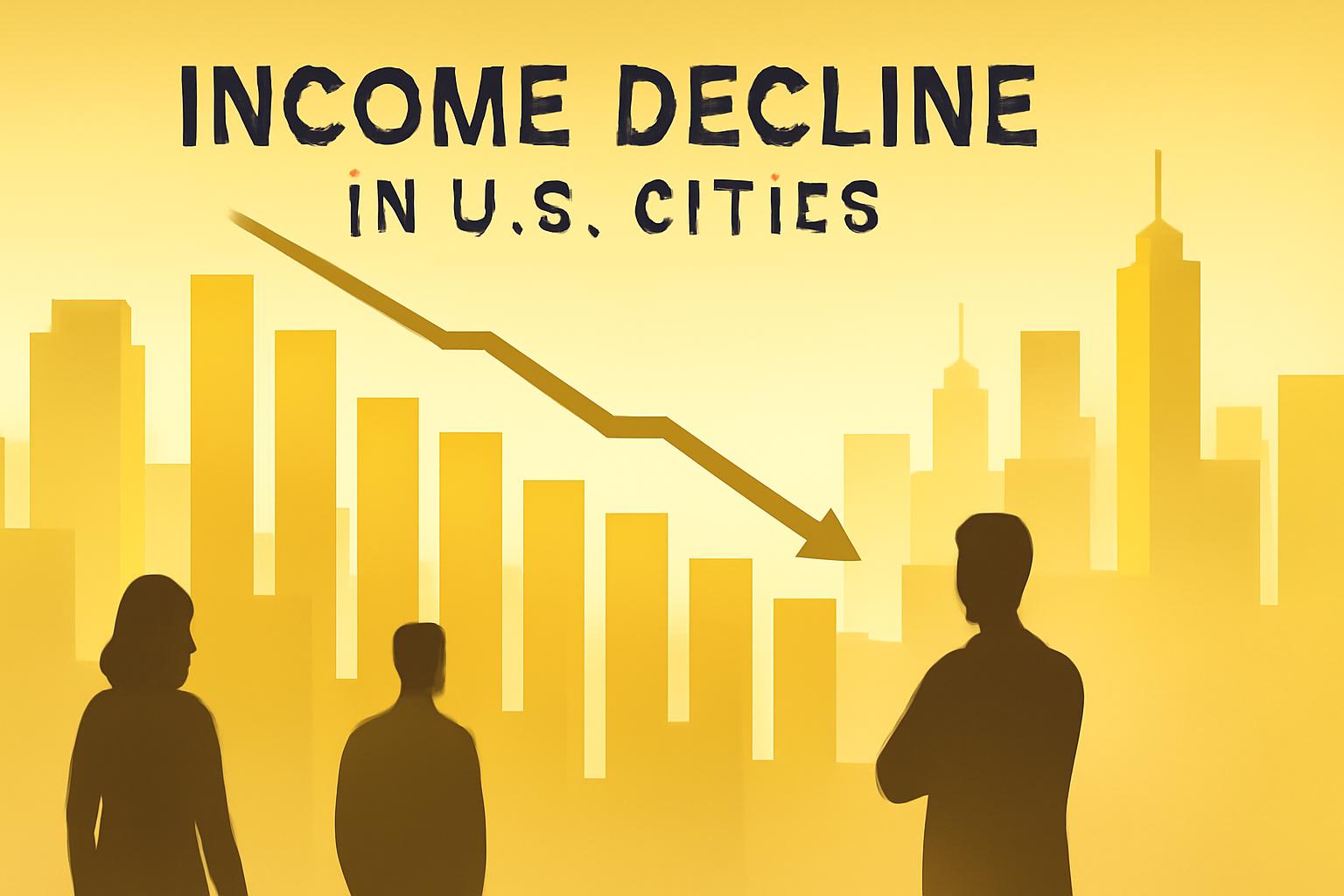Income Trends Across U.S. Cities in 2024
Between 2023 and 2024, median household incomes across the United States remained largely stagnant, increasing by just over 1%, according to recent Census Bureau estimates. However, this modest national growth masks notable declines in several major metropolitan areas.
Seven Major Cities Saw Income Declines
Analysis by SmartAsset of Census Bureau data reveals that median household incomes dropped in seven of the 50 largest U.S. cities. Minneapolis recorded the largest decrease, with median income falling over 4% to $77,732 from approximately $81,000 in 2023.
Families in Minneapolis Hit Hardest
Among households with children in Minneapolis, the median income declined by more than 19% year-over-year. Jaclyn DeJohn, director of economic analysis at SmartAsset, notes that this trend might reflect complex social and demographic factors beyond wage stagnation.
“While [the negative trend] may be indicative of families struggling to keep up with wage growth, it may also indicate other social or demographic trends,” said DeJohn. “Divorce leading to separated households or a parent leaving the workforce to care for children could contribute to income declines among family households.”
Declines Occur Even in High-Earning Cities
Despite income declines, four of the seven cities remain above the national median household income, which stood at $82,690 in 2023. Cities such as Denver, Seattle, and Austin continue to maintain relatively high income levels despite recent drops. DeJohn attributes these fluctuations to the inherent volatility of large urban economies, where factors like new business arrivals and shifting demographics can significantly affect wage dynamics.
Cities Exhibiting Slower Income Growth
- Philadelphia: 0.36% growth
- Indianapolis: 0.41% growth
- Colorado Springs, Colorado: 0.55% growth
- Omaha, Nebraska: 0.56% growth
- Boston: 0.89% growth
These figures underscore the uneven pace of income growth in many metropolitan areas, with several large cities lagging behind the national average increase of just over 1%.
FinOracleAI — Market View
The latest household income data highlights persistent economic disparities across U.S. metropolitan areas. While the national median income shows minimal growth, the declines in key cities may signal localized economic challenges, including demographic shifts and labor market disruptions.
- Opportunities: Targeted economic development and workforce support in affected cities could stabilize incomes and stimulate growth.
- Risks: Continued income stagnation or decline may exacerbate inequality and reduce consumer spending power in urban centers.
- Demographic changes, such as family structure variations, could further influence income statistics.
- Economic volatility in large cities necessitates close monitoring to anticipate wage growth or declines.
Impact: The uneven income trends across major U.S. cities suggest a cautious economic outlook, with potential pressures on urban households that could influence broader regional economies and policy responses.













